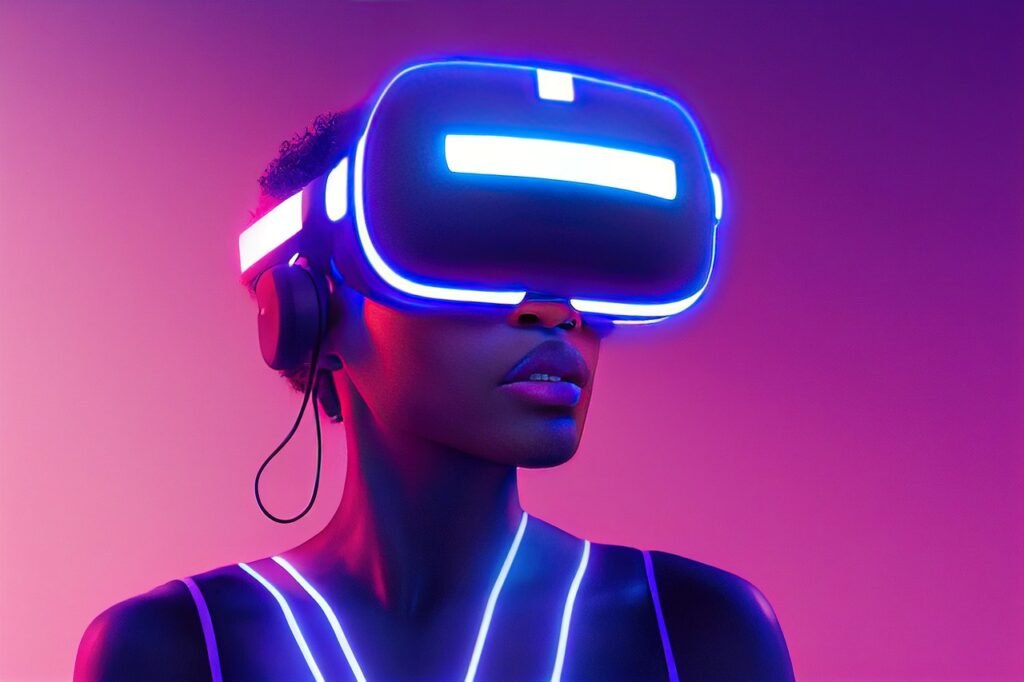Introduction
Digital advertising has traversed a remarkable journey, marked by continuous evolution and innovation. As we embark on the year 2023, the landscape of digital advertising is in the midst of profound transformations.
To remain competitive in this ever-changing realm, it is imperative to stay abreast of the latest trends and pivot our strategies accordingly. In this article, we delve into the five pivotal trends that are currently moulding the digital advertising terrain for 2023.
These trends serve as guideposts for advertisers, highlighting the need to embrace the shifting dynamics and harness new opportunities in the digital advertising realm.
Key Trends Shaping Digital Advertising in 2023

Trend 1: Privacy and Data Regulations
One of the most profound shifts taking place is the growing emphasis on privacy and data regulations in digital advertising.
In an era characterized by escalating concerns regarding data security and user privacy, businesses are finding themselves compelled to reassess and adapt their advertising strategies. Here are some pivotal aspects to consider within this trend:
#1. Impact of Privacy Regulations: The implementation of stringent privacy regulations like GDPR (General Data Protection Regulation) and CCPA (California Consumer Privacy Act) has cast a substantial shadow over the advertising industry.
Advertisers are now obligated to be more transparent and exercise caution when it comes to the collection and utilization of user data. The consequences for non-compliance with these regulations are severe, entailing hefty fines that underscore the critical importance of adhering to these legal frameworks.
#2. Adapting to Protect User Data: In response to the burgeoning privacy concerns, advertisers are increasingly investing in advanced technologies and strategies geared towards safeguarding user data. Robust data protection measures have become imperative, and obtaining explicit consent for data usage is now a standard practice.
Not only does this enhance user trust, but it also ensures that advertisers remain in compliance with the stringent privacy regulations in place. This evolution in advertising practices is a testament to the industry’s commitment to addressing privacy concerns head-on.
#3. The Rise of First-Party Data: In the face of more restrictive privacy regulations, first-party data has emerged as the linchpin of digital advertising strategies. First-party data, which is information collected directly from users, is becoming increasingly central to the advertising ecosystem.
Advertisers are shifting their focus towards leveraging the data they have collected themselves, often exempt from certain privacy regulations.
This strategic pivot enables advertisers to continue creating highly personalized experiences for users, all while maintaining compliance with evolving data protection standards.
Trend 2: Artificial Intelligence (AI) and Machine Learning
In the year 2023, the profound impact of Artificial Intelligence (AI) and Machine Learning on the digital advertising landscape becomes increasingly apparent.
These cutting-edge technologies are serving as the bedrock for transformative developments in advertising, ushering in new levels of efficiency and effectiveness. Here’s a closer look at how AI and machine learning are reshaping the industry:
#1. AI in Ad Targeting: AI algorithms have emerged as formidable tools for dissecting and understanding vast troves of user data. By doing so, they excel in the identification of ideal target audiences. This means advertisers can precisely deliver their messages to the right people at the right time.
The result is a remarkable improvement in ad engagement and return on investment (ROI). Through AI-driven ad targeting, advertisers can optimize their ad spend and ensure that their marketing efforts are focused where they matter most.
#2. Content Optimization: AI-powered content optimization tools are revolutionizing the way advertisers create and fine-tune their ads. These AI-driven systems employ data-driven insights to craft content that is not only relevant but also highly personalized to individual users.
As a result, the ads resonate more effectively with their intended audience, leading to higher conversion rates and, crucially, enhanced user experiences. Advertisers can now dynamically adjust content to match real-time trends and consumer preferences, thus ensuring their campaigns remain highly impactful.
#3. Successful AI-Driven Campaigns: In the ever-evolving world of digital advertising, case studies showcasing the achievements of AI-driven campaigns are on the rise. These real-world examples underscore the importance of integrating AI and machine learning into advertising strategies.
Advertisers who embrace these technologies are reaping the benefits in terms of improved campaign performance, audience engagement, and ultimately, business results. Staying competitive in this landscape requires acknowledging and harnessing the transformative power of AI.
Trend 3: Video Marketing Dominance
In the fast-evolving world of digital advertising, the supremacy of video marketing continues to gain momentum in 2023. This trend is propelled by several factors that underscore the growing importance of video as a preferred advertising format:
#1. The Rise of Video: Video content has proven itself to be exceptionally engaging and memorable when compared to static images or text. Advertisers are acutely aware of this and are making significant investments in video ads.
This shift is rooted in the recognition that video possesses a unique ability to capture and sustain the audience’s attention. As a result, video has become an indispensable tool for delivering compelling brand messages and fostering deeper connections with consumers.
#2. Strategies for Effective Video Ads: Crafting effective video ads has become both an art and a science. Advertisers are experimenting with various formats and styles to create videos that not only captivate but also convey their message persuasively.
From short, attention-grabbing clips that are tailor-made for social media feeds to longer, immersive storytelling that explores the brand’s narrative in-depth, the diversity of video ad strategies is expanding.
Advertisers are constantly fine-tuning their approaches to align with their target audience and campaign objectives.
#3. Mobile Video and Short-Form Content: The widespread use of mobile devices has ushered in the era of short-form video content. Platforms like TikTok are emblematic of the immense appeal of bite-sized videos that can be consumed on the go.
Advertisers are astutely harnessing this trend, recognizing that mobile users are often seeking quick, visually engaging content.
Short-form videos are ideally suited for conveying impactful messages in a limited timeframe, making them a vital component of many advertising strategies in 2023.
Trend 4: Programmatic Advertising Redefining Ad Placement
In the ever-evolving realm of digital advertising, programmatic advertising has emerged as a transformative force, fundamentally reshaping the landscape of how ads are purchased and positioned. This trend is marked by several key developments:
#1. Understanding Programmatic Advertising: At its core, programmatic advertising leverages automated systems to streamline the process of ad buying and placement in real-time.
This approach offers a range of advantages, including cost-effectiveness, operational efficiency, and laser-focused targeting. Advertisers are increasingly turning to programmatic advertising to enhance their campaigns and optimize their advertising budgets.
#2. Real-Time Bidding: Real-time bidding (RTB) stands as a central pillar of programmatic advertising. This mechanism enables advertisers to bid on ad space as it becomes available, ensuring that they can reach their desired audience precisely at the moment that matters most.
This real-time aspect of programmatic advertising enhances flexibility, enabling advertisers to respond swiftly to changing market dynamics and audience behavior.
#3. Challenges and Best Practices: While programmatic advertising offers remarkable benefits, it also presents certain challenges that advertisers must contend with. Notable among these challenges are issues such as ad fraud and concerns surrounding brand safety.
The vast scale and automation involved in programmatic advertising can inadvertently create opportunities for fraudulent activities. To address these challenges, advertisers must implement best practices, which include robust verification measures, ensuring brand-safe placements, and monitoring ad performance closely.
By doing so, advertisers can mitigate risks and safeguard their campaigns’ integrity and efficacy.
Trend 5: Augmented Reality (AR) and Virtual Reality (VR) in Digital Advertising
In the rapidly evolving landscape of digital advertising, the integration of Augmented Reality (AR) and Virtual Reality (VR) is increasingly prevalent, ushering in a new era of interactive and immersive advertising experiences.

This trend is characterized by several pivotal developments:
#1. Immersive Experiences: AR and VR technologies offer the power to provide users with immersive and interactive experiences that transcend the limitations of traditional ad formats.
Brands are harnessing these technologies to craft unforgettable encounters with their products and services. Whether it’s enabling customers to virtually try on clothing or experience a destination before booking a trip, AR and VR offer a level of engagement and interactivity that captivates and resonates with audiences.
These immersive experiences foster deeper connections between brands and consumers, enhancing brand loyalty and driving conversion rates.
#2. Future Potential: The potential for AR and VR in advertising is immense, with their growth trajectory poised for expansion. As these technologies become increasingly accessible and affordable, their adoption across various industries is expected to skyrocket.
This presents a wealth of opportunities for advertisers to explore innovative ways to engage audiences and tell their brand stories. From retail and entertainment to healthcare and education, the applications of AR and VR in advertising are virtually limitless.
They have the power to redefine how consumers interact with brands, products, and services, setting the stage for a new era of marketing.
As we look ahead, it’s clear that the integration of AR and VR in digital advertising represents an exciting frontier. The ability to provide users with immersive experiences that leave a lasting impact is a game-changer for advertisers.
With the growing accessibility of AR and VR technologies, brands are poised to unlock their full potential and create advertising campaigns that not only capture attention but also deeply engage and resonate with audiences.
This trend underscores the dynamic nature of digital advertising and the continuous quest for innovative ways to connect with consumers in an ever-evolving digital landscape.
Conclusion
In 2023, the digital advertising landscape is shaped by these five key trends: Privacy and Data Regulations, AI and Machine Learning, Video Marketing Dominance, Programmatic Advertising, and Augmented Reality (AR) and Virtual Reality (VR).
To succeed in this ever-evolving industry, advertisers must adapt their strategies to incorporate these trends, ensuring they remain competitive and connect with their target audiences in meaningful ways. Staying updated and embracing change will be essential for successful digital advertising in the years to come.




